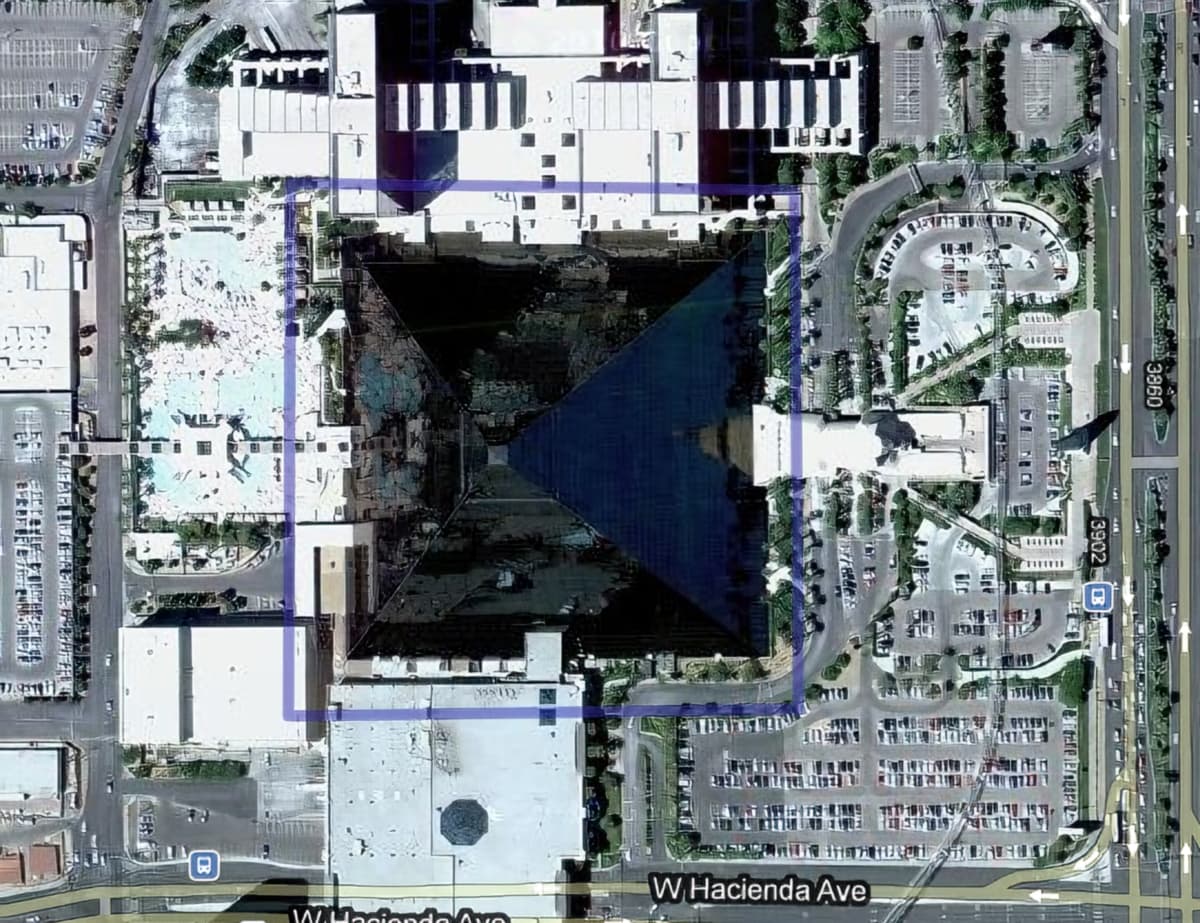I was going over photos from our latest Vegas trip the other night, pondering on how I never seem to make it to every place I want to go when I’m out there in the desert and how I always think “I’ll make it there next time”, then never do. Part of the problem with trying to make it everywhere you want to go in Vegas is the sheer size of The Strip, which is where we usually confine ourselves to while visiting the gambling Mecca.
Anyone whose ever been to Las Vegas knows that everything is further than you think it is. The size of the hotels are deceiving…more than once a day do you think “Oh, The Wynn? It’s just right there”, then end up walking 45 minutes to actually get “there”. People forget that, because of the way the land was platted back in the day, the largest resorts occupy a full block. And a full block on Las Vegas Boulevard fronts a quarter mile along the road.
Since the largest of the resorts have over 3,000 rooms, everything is outsized, though you have to give the architects credit in using optical trickery to try to bring everything down to a human scale on some of the buildings. For instance, The Bellagio has 3,933 rooms, most of which are in its main tower:
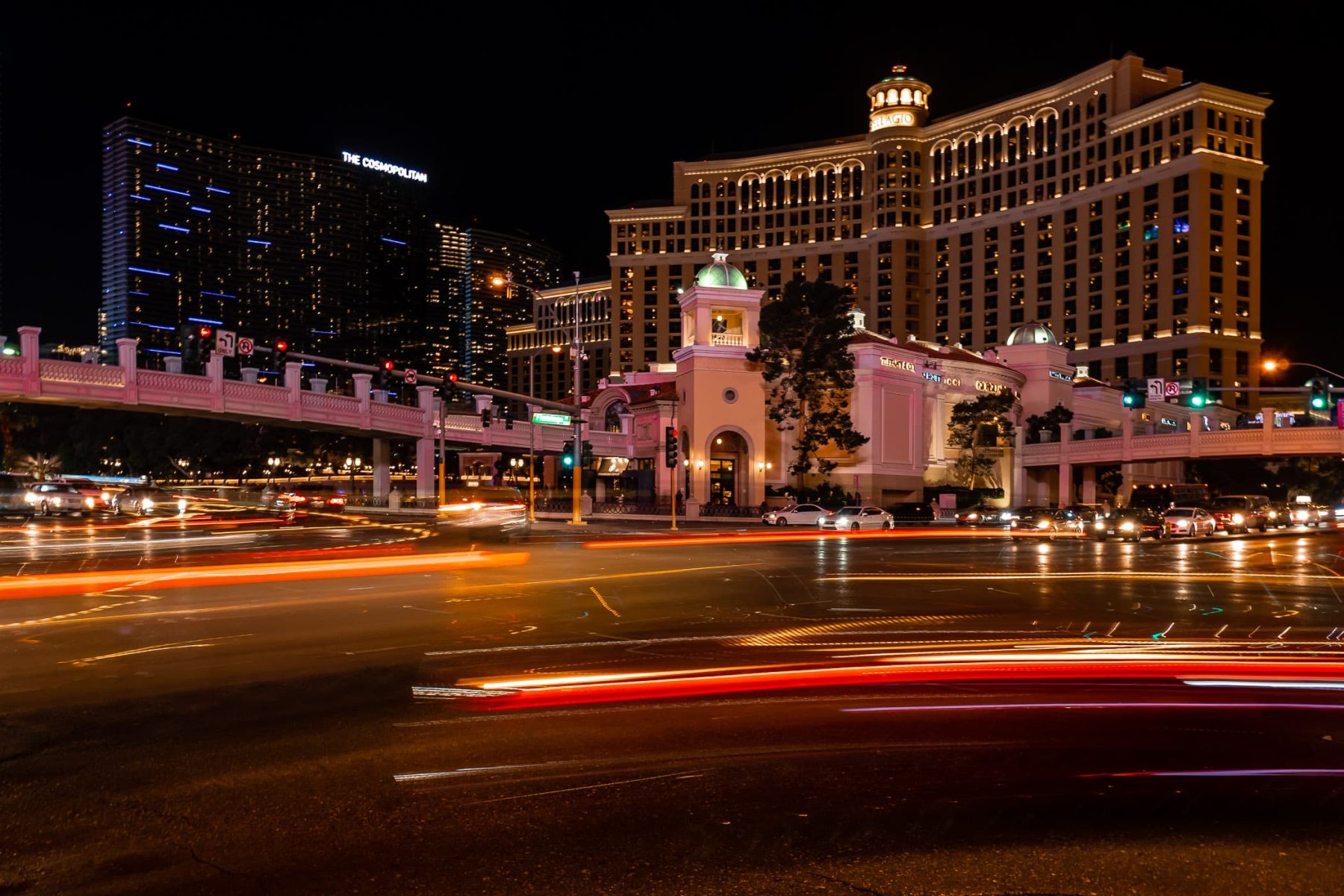
Now, count the floors. I came up with roughly sixteen. Not that big, eh? Wrong. It’s actually 32 stories tall, but uses a “One Window, Four Rooms” architectural trick to make it seem smaller (you can read more about it here, along with other Vegas examples). In addition, the lake in front of the hotel–home of the famous fountains–is 9 acres in area, giving the building a nice setback to help “shrink” it.
As you can see, things along The Strip are really massive. But I wanted to know how massive The Strip is compared to something I know well, so I decided to compare its area with that of my neighborhood. So I popped over to MapFrappe, which lets you outline things in one Google Map and overlay it in another, and go to work.
I outlined The Strip corridor along its traditional boundaries–from Sahara Avenue in the north to Russell Road in the south. For the east and west boundaries, I used the extent of the back of the lots of the various resorts. This covered all the land from the recently-closed Sahara Hotel and Casino to the Mandalay Bay. Then I overlaid it on the Addison, Texas area:

It nicely fits between Spring Valley Road and Frankford Road–just about four miles! So, no wonder it takes so long to walk anywhere on The Strip (and the 100 degree-plus summer heat doesn’t help!)
Of course, I couldn’t stop there…I had to compare the sizes of lots of things. For instance, here’s the main campus (excluding Research Park, the Bush Presidential Library and Easterwood Airport) of my alma mater, Texas A&M University, superimposed over central Austin, Texas–home of A&M’s rival the University of Texas (it’s the area clustered around the red-roofed building):
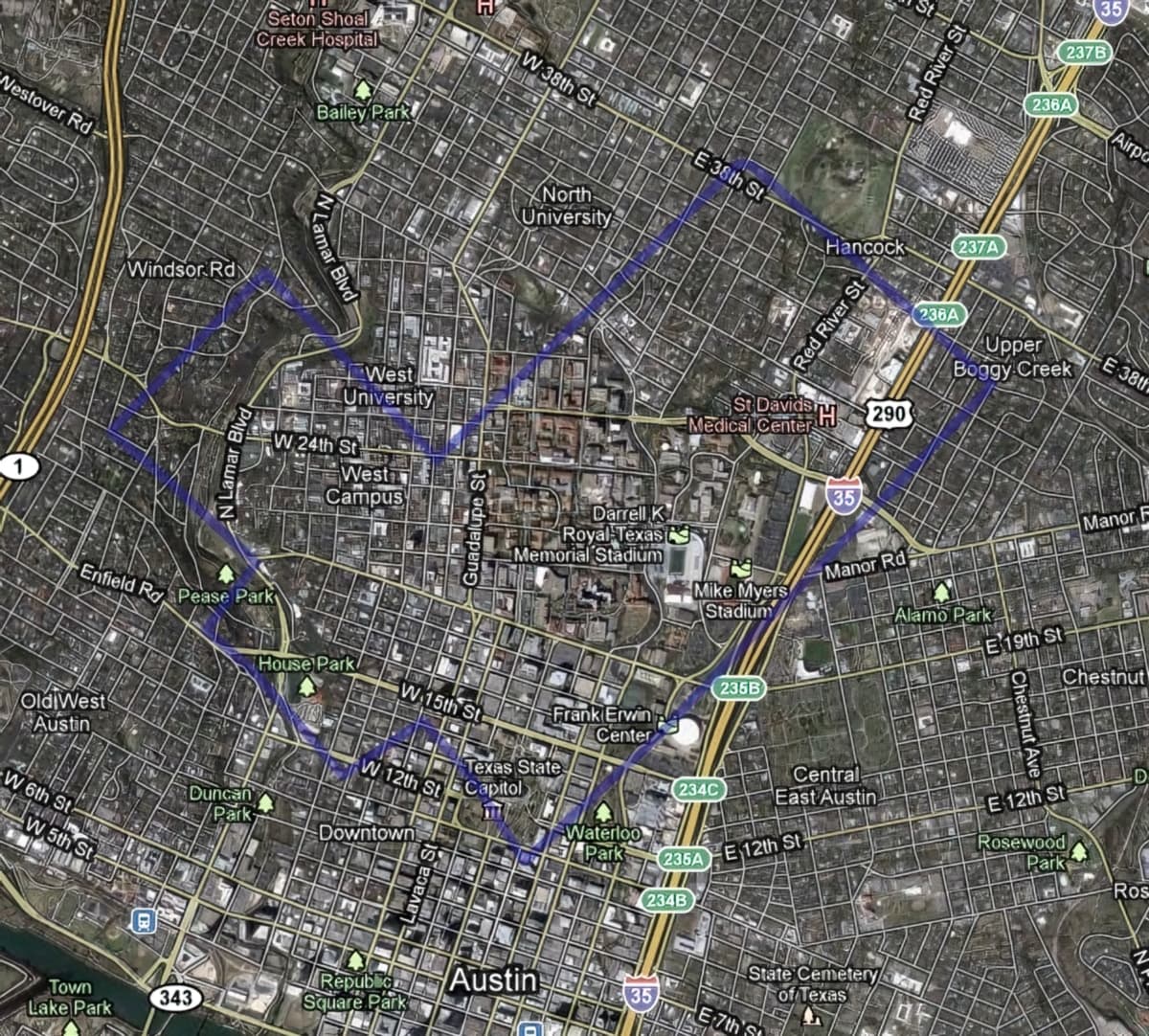
And here’s Rome’s Colosseum compared to the Dallas Cowboys’ stadium:
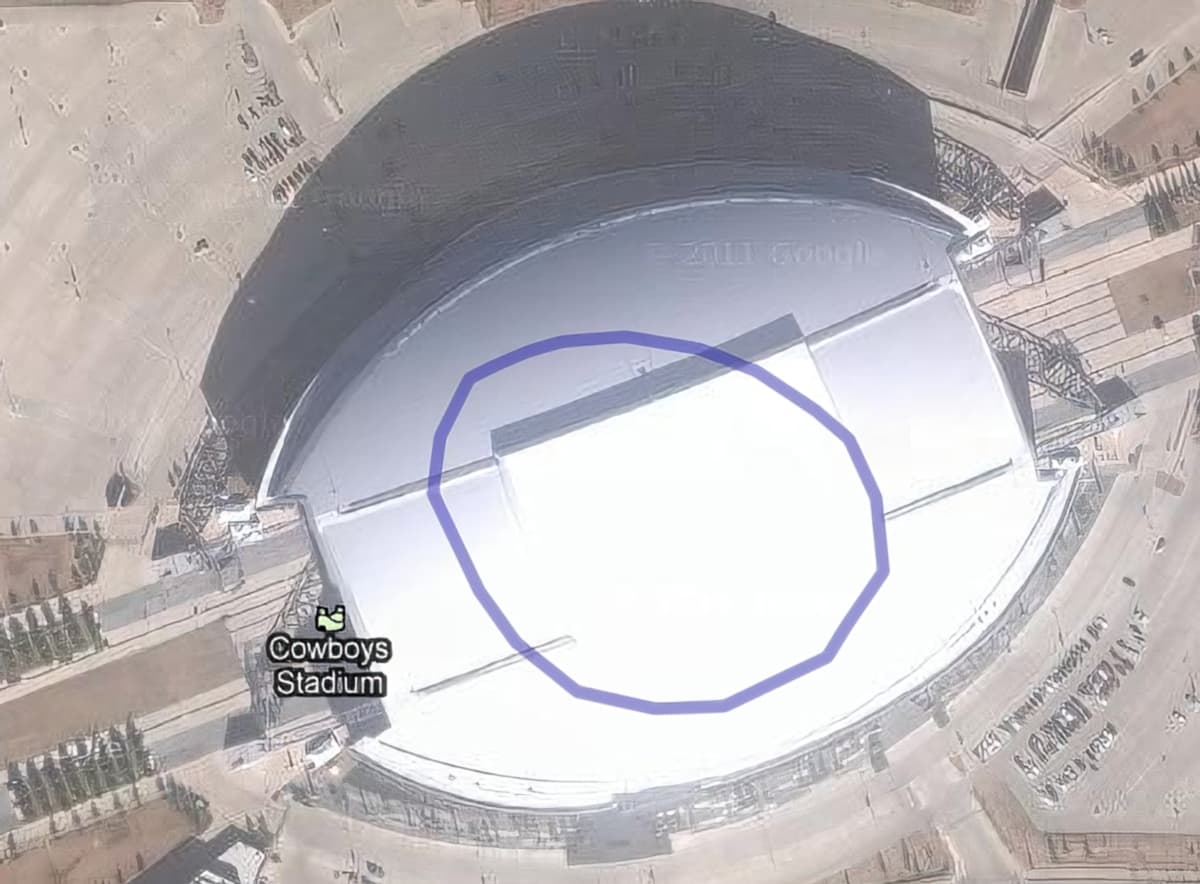
Here’s Manhattan Island overlaid Houston:
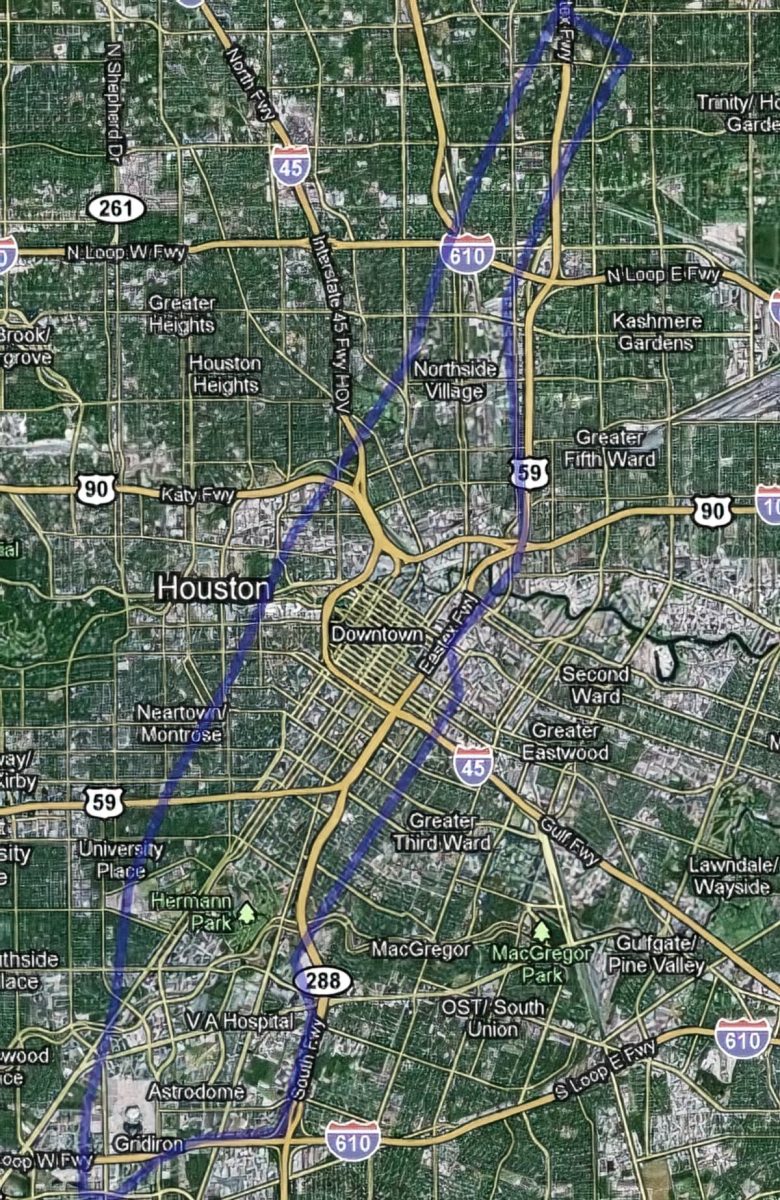
Here’s Beijing’s Forbidden City overlaid on the Vatican:
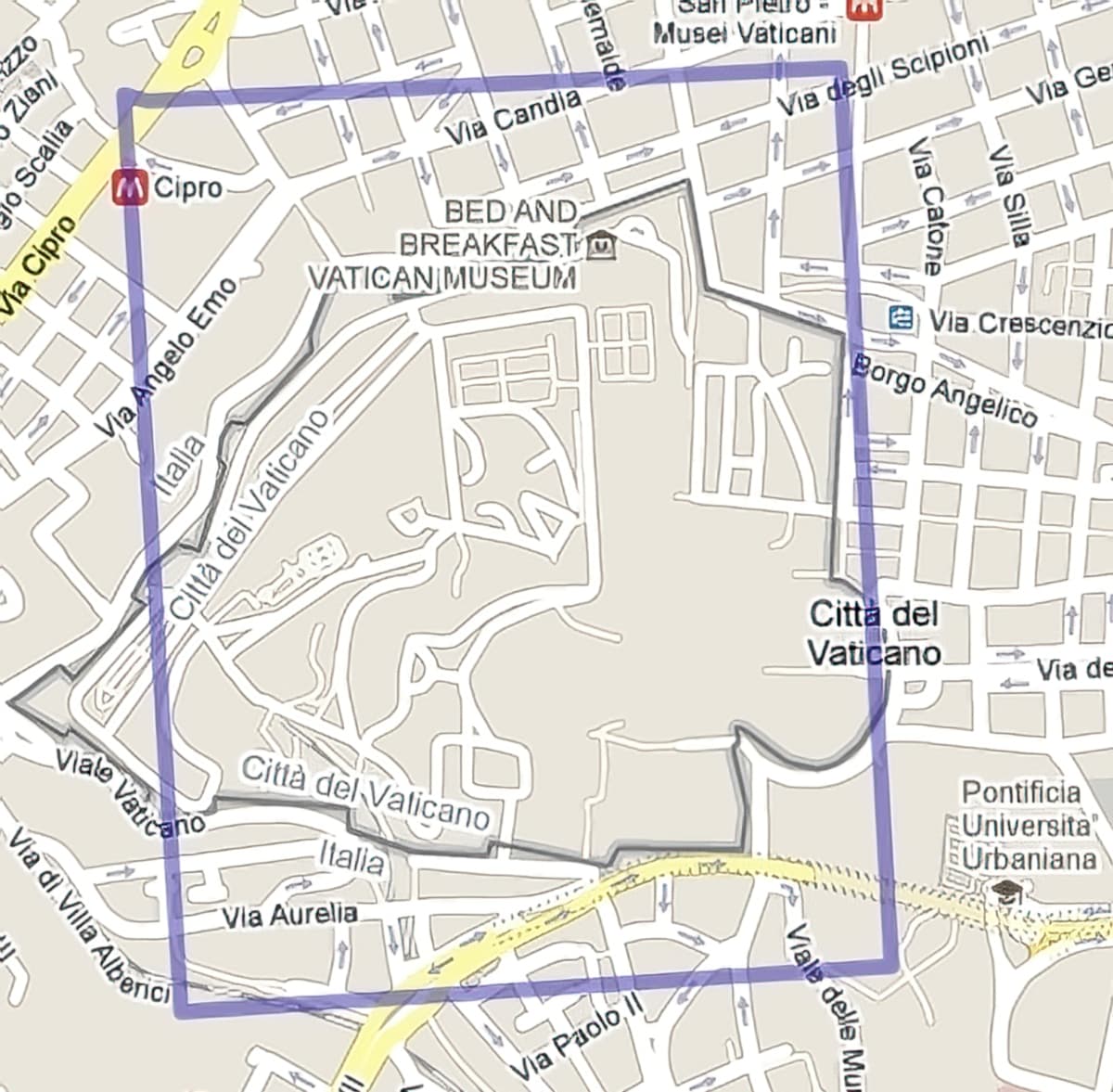
Back to my home state of Texas…growing up here, you’re taught that Texas is big, but you don’t really get a good idea of just how big until you compare it to other places:

So, yeah, Texas is pretty big. Interestingly, the longest dimension of the state is from the corner of the Panhandle where the border touches Oklahoma and New Mexico to the tip of state at the mouth of the Rio Grande–a distance of 796 miles. Or, more succinctly, you could fly from that corner and be in any of the places within this circle quicker than you’d be to Brownsville:
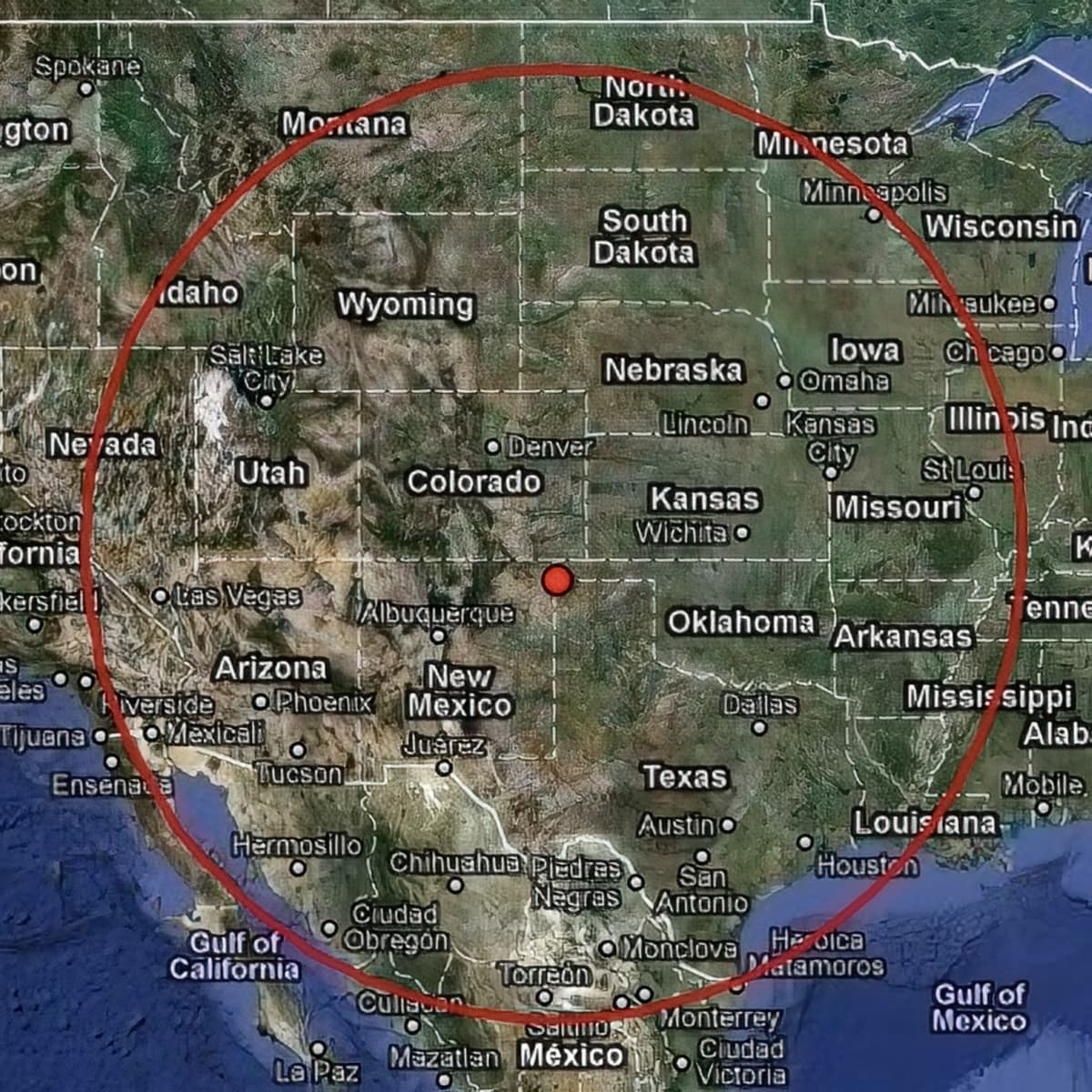
Interestingly, the size of Texas means that people in Texarkana are closer to Chicago than El Paso, Houstonians are closer to Mobile, Alabama than Amarillo, people in Brownsville are closer to Mexico City than Dallas and El Paso residents are closer to Las Vegas, where this post started, than to Dallas.
Bonus fact: The tiny Texas Panhandle town of Dalhart is closer to six other state capitals than its own: Santa Fe, NM; Denver, CO; Topeka, KS; Oklahoma City, OK; Lincoln, NE; and Cheyenne, WY.
Also, you can view my Vegas photos here.
Bonus: Here’s the Great Pyramid overlaid on The Luxor:
